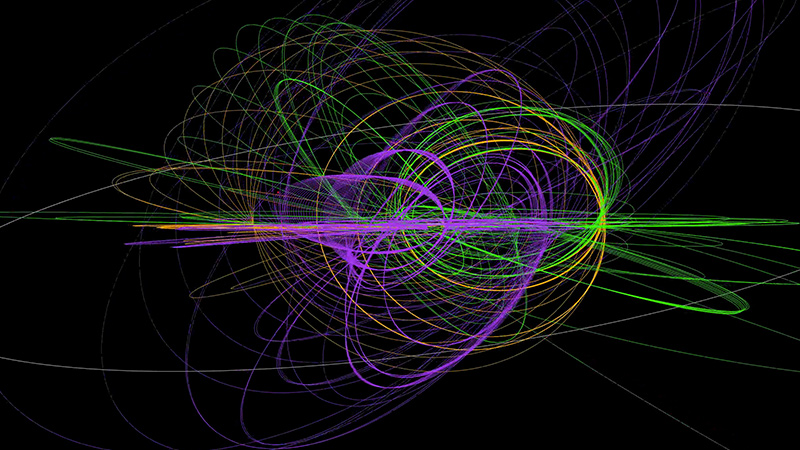Stay Up to Date
Submit your email address to receive the latest industry and Aerospace America news.
The Astrodynamics Technical Committee advances the science of trajectory determination, prediction and adjustment, and also spacecraft navigation and attitude determination.
This has been a busy year for space exploration and astrodynamics with challenging milestones achieved and new frontiers opened. The year started with NASA’s January announcement of two new missions to study asteroids in the 2020s. The Lucy mission will study six Trojan asteroids captured by Jupiter and Sun’s gravity, and the Psyche mission will study a unique metal asteroid known as 16 Psyche in the asteroid belt.
In March, SpaceX achieved the world’s first reflight of an orbital-class booster; an important step to the commercialization of reusable launch vehicles. SpaceX’s Falcon 9 rocket launched a geosynchronous communications satellite March 30. The first stage of this booster previously supported a space station cargo resupply launch for NASA in April 2016. Following stage separation, the same first stage returned to Earth for a second time, landing on a remotely controlled ship stationed in the Atlantic Ocean. This reflight represents a milestone on the road to full rocket reusability.
After 16 months of science operations, the European Space Agency’s LISA Pathfinder completed its mission in June, demonstrating the drag-free technology necessary for ESA’s future Laser Interferometer Space Antenna mission for detecting gravitational waves at low frequencies.
In July, U.S. Sen. Ted Cruz, R-Texas, chairman of the subcommittee on space, science and competitiveness, convened a hearing titled “Reopening the American Frontier: Promoting Partnerships Between Commercial Space and the U.S. Government to Advance Exploration and Settlement” for examining partnerships between the U.S. government and commercial space industry to advance space exploration. Fundamental problems in astrodynamics were reported at the hearing, with emphasis on current and predicted problems regarding orbital debris and space traffic.
On Sept. 1, a 4.5-kilometer asteroid named Florence, one of the largest of the near-Earth asteroids, made a close approach to Earth of nearly 18 lunar distances. Florence is the largest asteroid to pass this close to our planet since the first near-Earth asteroid was discovered over a century ago. Radar images of Florence obtained at the 70-meter antenna at NASA’s Goldstone Deep Space Communications Complex in California revealed that the asteroid has two small moons. In March, it was announced that the same Goldstone radar had detected the Indian Space Research Organization’s Chandryaan-1 spacecraft in orbit about the moon. Chandryaan-1 had not been tracked for eight years.
Beyond cislunar space, in February, managers for NASA’s Juno spacecraft decided it would remain in a 53-day orbit — instead of the planned 14-day orbit — to avoid a potential risk of a main engine burn that could have resulted in a less-than-desirable orbit. NASA’s Dawn spacecraft celebrated its 10-year anniversary in September. Dawn lost its third reaction wheel in April, leaving it fully reliant on hydrazine-based attitude control. Despite the operational challenge, Dawn remains in good condition, waiting for its next assignment. On Sept. 15, the Cassini spacecraft was intentionally plunged into Saturn’s atmosphere, completing its “grand finale” phase 20 years since launch, with 13 years orbiting Saturn. This nuclear-powered spacecraft was one of the most ambitious space missions ever mounted as a joint endeavor of NASA, ESA and the Italian Space Agency.
ESA hosted the ninth Global Trajectory Optimization Competition in April. Thirty-six teams from around the world submitted solutions on how to actively remove a hypothetical set of space debris in orbit about Earth. The winning solution came from a team at NASA’s Jet Propulsion Laboratory that solved the combinatorial orbital dynamics problem to remove all 123 orbiting debris pieces with 10 missions.
Related Posts
Stay Up to Date
Submit your email address to receive the latest industry and Aerospace America news.




